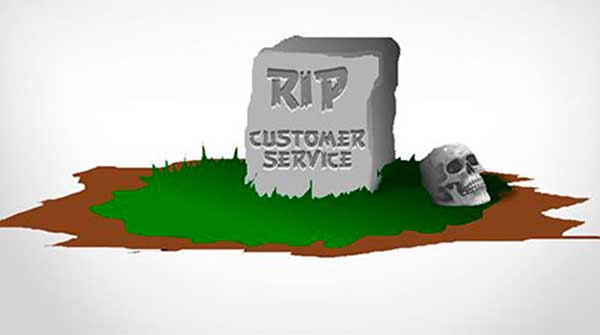How often do your customers leave your business without buying because your staff is ill-trained?

I had just climbed the steepest part of the hill and was out of breath when, out of the corner of my eye, I saw the dog sprinting out of the driveway toward me. My heart was already racing, and I was doing my best to stay on my bike when I felt its teeth bite into my calf muscle.
Though I wanted to kick out at the dog, my shoes were clipped to the bike pedals and all I could do was ride away.
A similar incident happened last week when I was shopping for something to patch my mother-in-law’s roof. I went into a store where I had experienced poor customer service several months earlier, hoping to give the business a second chance.
I walked past the long line of annoyed-looking customers waiting at the till in search of someone who could tell me if the store had the product I was searching for. Eventually, I found a store employee.
 |
|||||
|
“Do you have anything to patch a roof,” I asked.
“No,” she growled before she turned and went back to her task.
I was stunned but not surprised. It was apparent that she had been trained to be efficient but not helpful. I suspected that somewhere in the vast confines of the business there was something I could buy to solve my problem. However, I turned on my heel and left to spend my money elsewhere.
How often do your customers leave your business because you’ve trained your staff to guard your products but not sell them?
Why is it that you have staff who growl at customers but fail to ask questions that go deeper into trying to solve their problems?
Why do we let our staff answer questions in a manner that leaves our customers wondering what’s wrong with them and the establishment?
In a competitive retail marketplace, if we want to sell more products and have satisfied customers returning regularly, we need to establish a level of service that will instil loyalty and encourage repetitive business transactions. Unless we simply want to compete on price, we must clarify that customers should be treated like humans, not problems.
So how do we do this? How do we get our employees to create an environment that makes our customers want to come back and purchase from us week after week, year after year?
Hire the right people. It starts with us. As leaders, we need to establish a protocol for hiring the right people. We need to grade our applicants in relation to our core values. We need to understand what type of personality is required for each job in our organization. If they’re dealing with customers, they need to like people. If they would rather be doing tasks, give them tasks but keep them away from people.
Onboard them with an understanding of our vision. Our staff need to be clear about what we do for our customers. We need to train them about the value we create; why our products are made with quality; why we care; how we give back to the community; and how we expect them to communicate this to our customers.
Script it out. If we want our team to engage our customers in a certain way, we need to script it out for them. We need to be very clear about our customer protocol. This is what they say and why they say it. We want our employees to communicate our messages to our customers so that when the staff member moves on, our customers remain because they understand our vision, our purpose and our commitment. Leaving new staff, or any staff for that matter, to respond to customers with their own scripts is a formula for failure.
Keep staff accountable. As leaders in our organization, if we fail to check in on our employees and measure their performance in a meaningful and engaging way, we’re giving them the message that we don’t care.
Being bitten by a dog is actually more pleasant than receiving poor customer service. It’s true that my leg hurt, but the dog was just doing its job. Its owner had trained it to protect its property and I was too close, too threatening.
Yes, I was annoyed that it ran out on the road, and I will be more prepared next time I ride up that hill to teach it a lesson.
But when we have a level of expectation of how a customer should be treated and a business fails to live up to that service, there’s a bitter taste that lasts much longer than a dog bite.
Dave Fuller, MBA, is an award-winning business coach and a partner with Pivotleader Inc.
For interview requests, click here.
The opinions expressed by our columnists and contributors are theirs alone and do not inherently or expressly reflect the views of our publication.
© Troy Media
Troy Media is an editorial content provider to media outlets and its own hosted community news outlets across Canada.
